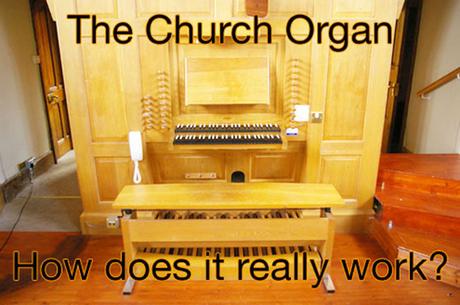
The modern organ is the most complicated of all instruments. Its sounds are produced by wind blowing through several complete sets, or ranks, of pipes. In each rank the pipes are graded in size, and therefore in pitch, and each rank produces its own particular timbre, or tone-colour. Organs used to be blown by means of hand or foot-operated bellows; but nowadays, in most organs, there is a blower powered by electricity.
The ranks of pipes are connected to two or more keyboards called manuals (from a Latin word meaning ‘hands’). The pedals (from a Latin word meaning ‘feet’) are of wood and arranged in a similar pattern to the black and white keys on a keyboard. The organist plays on these by using the toe and heel of each foot. Notes are sounded by pressing down keys or pedals, so allowing wind to pass through the appropriate pipes. The pitch of a note depends mainly upon the length of the pipe:
The shorter the pipe, the higher the noteThe longer the pipe, the lower the note
There are two main kinds of organ pipe: flue pipes, which produce their sounds in the same way as a recorder; and reed pipes, which have a thin strip of metal which vibrates as air passes through.
The organist decides which ranks of pipes will sound by pulling out various stops. Each stop controls a rank of pipes of a particular timbre. The sounds range from the basis and characteristic organ tone, called ‘diapason’, to sounds imitating other instruments, such as flute, trumpet, viola, and so on. The organist can mix together different kinds of sound, or he can contrast one against another, playing with each hand on a different manual. By using ‘coupler stops’ two or more manuals can be coupled together and played from one keyboard, providing a richer mixture of timbres and, when needed, a greater volume of sound.
